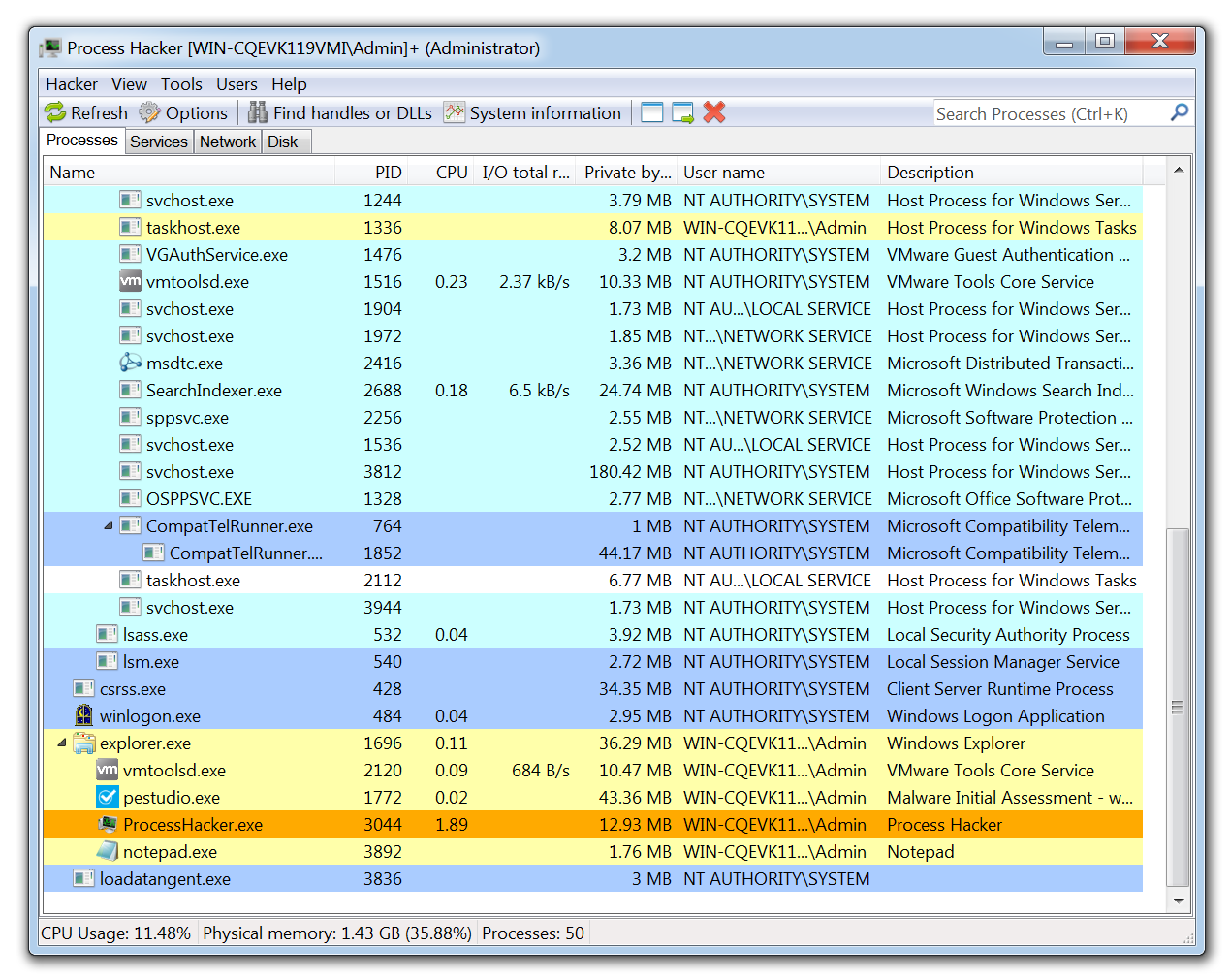Install Specific Version of a Package with pip
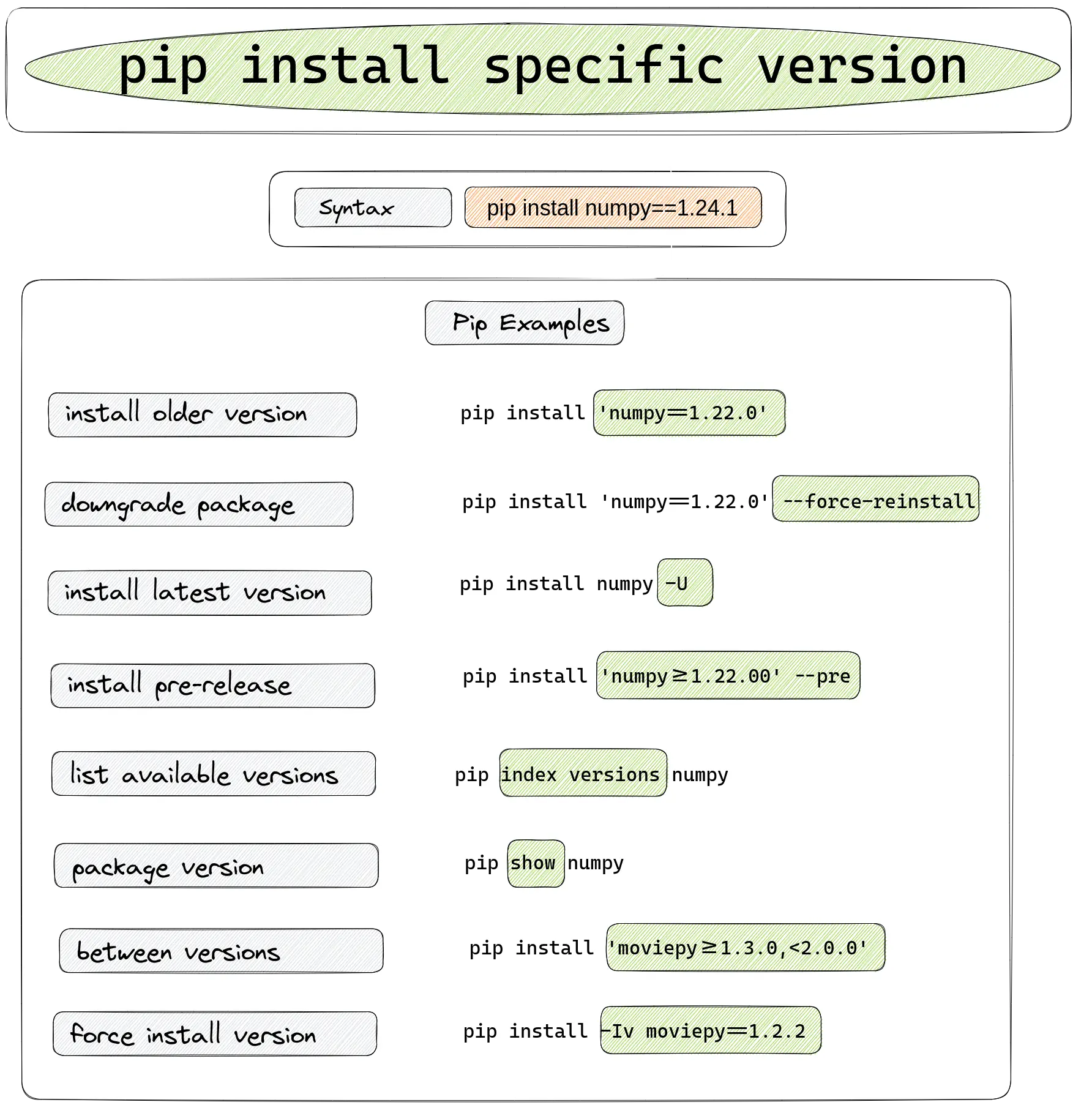
In the world of Python development, package management plays a crucial role in maintaining a stable and efficient programming environment. The pip package manager, included with Python installations, is a powerful tool for installing, upgrading, and managing Python packages. However, there are scenarios where you might need to install a specific version of a package to ensure compatibility with your project's requirements or to avoid potential bugs in newer versions.
This article will guide you through the process of installing a specific version of a package using pip, providing you with the necessary commands and understanding to manage your Python dependencies effectively. By the end of this guide, you'll be equipped with the knowledge to tackle package version control in your Python projects.
Understanding the Need for Specific Package Versions
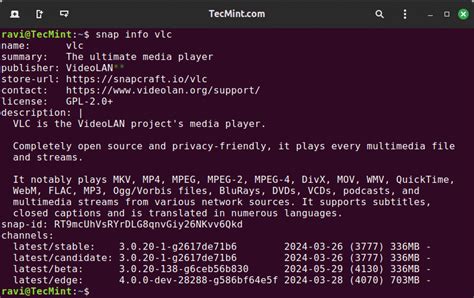
While the latest version of a package often brings exciting new features and improvements, it can also introduce compatibility issues or unexpected behavior. In the fast-paced world of software development, it’s not uncommon for projects to rely on specific package versions to ensure stability and maintain a consistent development environment.
By installing a specific version of a package, you gain control over your project's dependencies, allowing you to work with a known, reliable configuration. This is especially important when collaborating with a team or deploying your project to production, where consistency and reproducibility are key.
Installing a Specific Package Version with pip
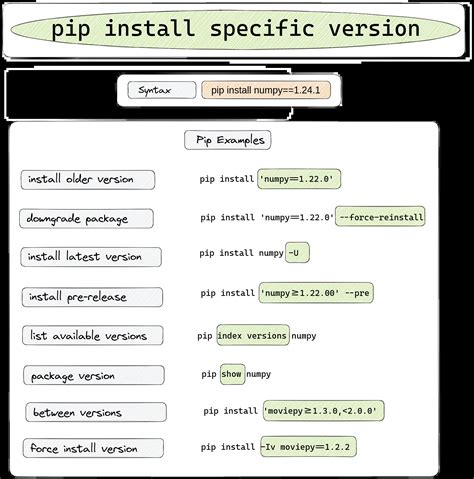
To install a specific version of a package using pip, you’ll need to use the –version or == operator followed by the desired version number. Here’s the basic syntax:
pip install package_name==desired_version
For example, if you want to install version 1.2.3 of the requests package, you would use the following command:
pip install requests==1.2.3
This command instructs pip to install the requests package, but specifically version 1.2.3. If that version is not already installed, pip will retrieve and install it from the Python Package Index (PyPI). If the package is already installed, pip will simply update it to the specified version.
Using pip install with Version Specifications
You can use the pip install command with various version specifications to install a specific version of a package. Here are a few examples:
pip install package_name==1.2.3: Install version 1.2.3 of the package.pip install package_name==1.*: Install any version starting with 1.pip install package_name==1.2: Install any version starting with 1.2.pip install package_name==1.2.*: Install any version starting with 1.2.x.
These version specifications allow you to control the installed package version with a high degree of granularity, ensuring your project works with the desired version.
Verifying the Installed Package Version
After installing a specific version of a package, it’s good practice to verify that the correct version has been installed. You can do this by using the pip show command followed by the package name.
pip show package_name
This command will display information about the installed package, including the version number. You can then compare it with the desired version to ensure it matches.
Managing Multiple Package Versions
In some cases, you might need to manage multiple versions of the same package in your Python environment. This can be useful when working on different projects with varying dependencies or when you need to test and debug issues across different package versions.
Creating Virtual Environments
One effective way to manage multiple package versions is by using virtual environments. A virtual environment is an isolated Python environment that allows you to install packages without affecting your global Python installation. This way, you can have different versions of the same package in separate virtual environments, ensuring project-specific dependencies are maintained.
To create a virtual environment, you can use the venv module, which comes bundled with Python 3. Here's an example of how to create and activate a virtual environment:
python -m venv my_env
source my_env/bin/activate (for Unix-based systems) or my_env\Scripts\activate.bat (for Windows)
Once you've activated the virtual environment, you can install packages using pip as usual. The packages will be installed within the virtual environment, leaving your global Python installation untouched.
Using pip freeze for Dependency Management
To manage and track the installed packages and their versions across different virtual environments or projects, you can use the pip freeze command. This command generates a list of installed packages and their versions, which you can save as a requirements file.
pip freeze > requirements.txt
The requirements.txt file contains a list of packages and their specific versions, allowing you to easily recreate the same environment by installing these packages with pip install -r requirements.txt.
Advanced Package Version Control
While the basic pip commands cover most use cases for installing specific package versions, there are more advanced techniques for fine-grained control over package versions.
Using pip install –editable
The –editable option in pip allows you to install a package in “editable” mode, which means that any changes made to the package’s source code will be immediately reflected in the installed package. This is particularly useful for development purposes or when working with locally modified packages.
pip install --editable path/to/package
This command installs the package from its source code directory, allowing you to make changes and test them without needing to reinstall the package every time.
Managing Package Versions with setup.py
If you’re working on a Python package yourself, you can specify the allowed package versions in the setup.py file. This way, you can control which versions of dependent packages are compatible with your package, ensuring smooth installations and avoiding potential issues.
In the setup.py file, you can use the install_requires parameter to specify the required package versions. Here's an example:
setup(name='my_package', install_requires=['package_name==1.2.3', 'another_package>2.0'])
In this example, my_package requires package_name to be version 1.2.3 and another_package to be greater than version 2.0.
Best Practices for Package Version Control
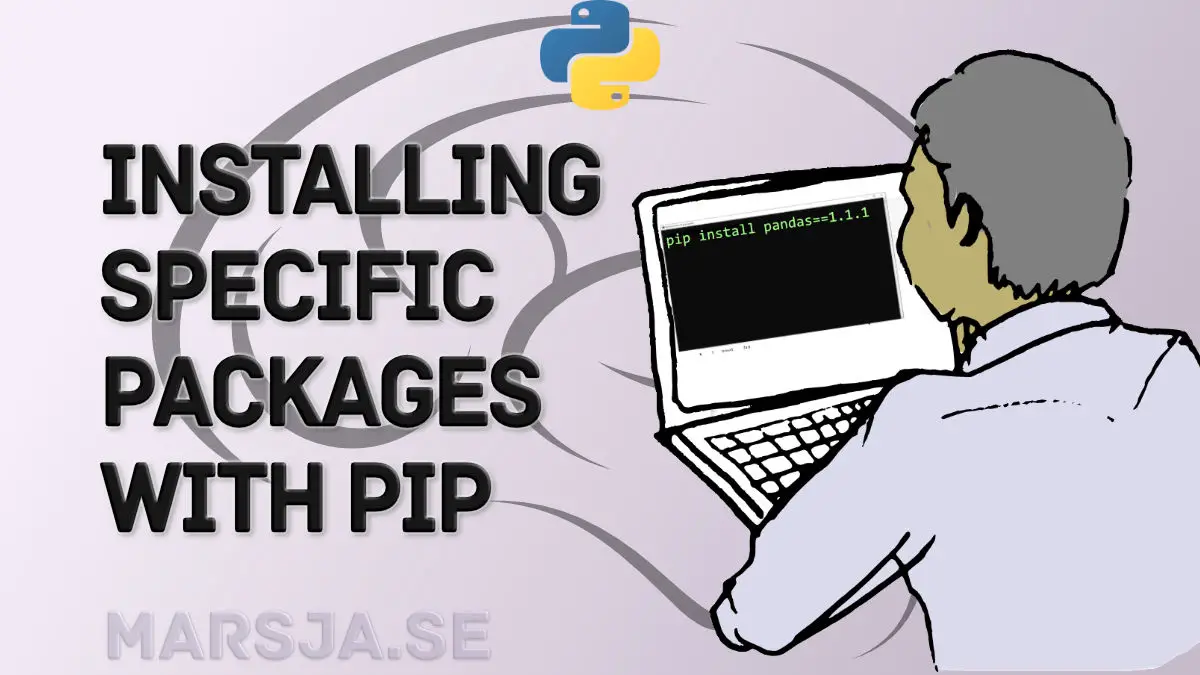
When managing package versions, it’s essential to follow best practices to ensure a stable and maintainable development environment.
- Use Virtual Environments: Create and use virtual environments for each project to isolate dependencies and avoid conflicts.
- Document Dependencies: Keep a clear record of the package versions used in your project. This can be done through a
requirements.txtfile or a project-specific documentation file. - Regularly Update Packages: While it's important to control package versions, it's also crucial to keep packages up-to-date to benefit from bug fixes and new features. Regularly review and update packages, but always test thoroughly before deploying to production.
- Pin Important Packages: For packages that are critical to your project's functionality, consider "pinning" them to a specific version. This ensures that your project remains compatible with that version, even if the package is updated.
Conclusion
Managing package versions is an essential skill for any Python developer, especially when working on complex projects with interdependent packages. By understanding how to install specific package versions with pip, creating virtual environments, and following best practices, you can maintain a stable and reliable development environment.
Remember, package version control is not just about ensuring compatibility; it's also about empowering you to choose the right tools for your project, enabling you to work with the versions that best suit your needs.
How do I find the latest version of a package on PyPI?
+To find the latest version of a package on PyPI, you can visit the package’s page on the PyPI website. Alternatively, you can use the pip show command followed by the package name to display the latest installed version, which should be the latest available version from PyPI.
Can I install multiple versions of the same package in a single project?
+Yes, you can install multiple versions of the same package in a single project by using different virtual environments. Each virtual environment can have its own set of installed packages, allowing you to manage different versions of the same package for different project requirements.
What happens if I try to install a package version that is not available on PyPI?
+If you try to install a package version that is not available on PyPI, pip will raise an error, indicating that the specified version could not be found. In such cases, you’ll need to either choose a different version or look for the package’s source code to install it manually.
Is it safe to update packages to the latest version without testing first?
+While it’s tempting to update packages to the latest version, it’s important to test the updates thoroughly before deploying to production. New versions can introduce changes that may break your project’s functionality or introduce new bugs. Always test updates in a development environment before rolling them out to production.



